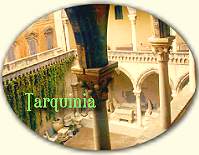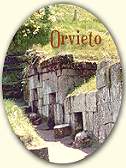1. Etruscan Place Names
This chapter will treat place names resp. their derivates (ethnics) that occur in Etruscan sources. Such sources consist mainly in coins and dedicatory inscriptions. Texts on coins are generally restricted to one single word -- which implies sometimes unsolvable questions as to what grammatical relation to the place name is expressed, or even, if in a given case the ethnic is employed.
| Etruscan Word | Latin and Italian Equivalents | Source | Commentary |
| |
Aritim,
loc.Aritimi |
Arretium;
Arezzo |
cf. NHE, 302 |
|
| Caisria-* |
Caere;
Cerveteri |
reconstructed from phoenician kysry' |
Phoenician kysry' of the Pyrgi bilingual is to be read approximately /kaysriya'/. As such it is rather near to the later attested ceizra, which, however, occurring in a producer's mark (Vs 6.7), is morphologically unclear. There is no answer to the question why the Greeks called this very town Agylla. |
Capua*,
loc. Capue |
Capua;
(Santa Maria di) Capua |
cf. NHE, 253 f. |
|
Cel "Earth",
loc. Celthi
"in Cel, in/on earth" |
 |
Cultual place on the Northern shore of Lake Trasimene, where the goddess Cel ati "Mother Earth" was worshipped.
My hypothesis: "earth" must have been *hum- in Umbrian (cf. Latin humus). On one of the opposite shores of the lake, a place may have been called *trav-hum- "Yonder Hum-", which place, growing famous, finally gave its name to the lake, developping from *travhume:no- > Lat. *trans(h)umenus > (lacus) Trasumenus > Ital. Lago Trasimeno = Lago di Perugia. |
Curtuna*,
loc. Curtun() |
Cortona;
Cortona |
|
|
| Farar-* |
|
reconstructed from the ethnic used as a personal name Farari |
a place in Umbria |
| F(e)r-nta-* ? |
Ferentium;
Férento |
reconstructed from the ethnic F(e)r-ntac (NHE, 195 f.) |
|
Hashp(a)na*,
gen. Hashpnas |
Colonna di Buriano, renamed Vetulonia in 1887 |
ethnic nom. erg. [hash]panalas |
Helmets inscribed hashpnas were discovered at a gate of Vetulonia. On the stele Vn 1.1 from Poggio alla Guardia near Vetulonia, I read the restored ethnic [hash]panalas. |
| Hurta-* |
Horta;
Orte |
reconstructed from the ethnic used as a personal name Hurtate- |
The name in itself is Latin, i.e. the collective form of hortus "garden" |
| Manthva* |
Mantua;
Mantova |
reconstructed from the ethnic used as a personal name Manthuate |
 |
Pershia*,
loc. Pershie |
Perusia;
Perugia |
cf. NHE, 301 |
| Pupluna |
Populonia;
Populonia |
|
Ruma*
|
Roma;
Roma |
reconstructed from the ethnic rumach |
Caution: the name in itself isn't Etruscan! |
Tarchna,
loc. + thi Tarchnalth(i) |
Tarquinii;
Corneto, renamed Tarquinia in 1922 |
|
It seems that tar/ls (not to be read tarils) is a contraction of tar(chna)ls "from Tarquinii" |
Teca-*,
loc. Tece |
 |
a cultual place on the shores of Lake Trasimene (NHE, 305) |
Truia*,
loc. + s Truies "from Troy" |
the respective ethnic is called truials "Trojan". At any rate, the name is Greek. |
Trutvecia*,
loc. Trutvecie |
cultual place near Volsinii |
Velathri
(nominative case ?) |
Uolaterrae;
Volterra |
|
|
Velca-*
loc. Velclthi |
Uolcii;
Vulci |
|
|
| Velethna-* |
|
reconstructed from the ethnic °nalas |
unidentified place; cf. NHE, 222, D18 |
Velsena,
loc. Velsnathi,
ethnic velsnach |
Uolsinii;
Orvieto |
 |
After defeating and destroying Volsinii in 264 BC, Rome obliged the survivors to settle in the plane, on the shores of the lake that is nowadays called Lago di Bolsena, since this new settlement continued to carry the old name: Bolsena < *Uolsinia. The original city on the plateau is known as Orvieto in modern times -- which name can be derived from its Latin designation as urbs vetus "old town".
On a boundary stone we find veal, i. e. a contraction of ve(lsn)al. |
There can be mistakes even in the best books: the place name Mula- (NHE, 445) must be discarded, since I'm now reading muleth in AT 1.109 as a contraction of mu(nic)leth "yet, already".
Admittedly, the reconstruction of place names out of personal names can at times prove risky. The Etruscan name Lapicane has therefore been excluded from my list, as it is clearly etruscanizing Latin Labicanus "from Labici" (a place in Latium, nowadays called Monte Compatri).
In books, you will find a host of place names whose existence can by no means be regarded as asserted. E.g., what is actually the name of a divinity, Cleus(h)ins, is taken and presented as pertaining to Clusium (Chiusi), or even as being the very name of this city. An inscription from Carthage shows karthazie puinel, but the morphological as well as syntactic classifications of both words remain doubtful. Their translation as "Punic from Carthage" or similar is mere guessing.
Pictures copyright © Pia Frauss
|

